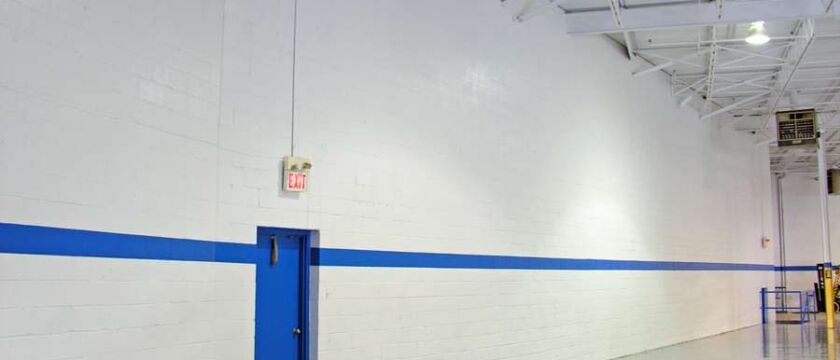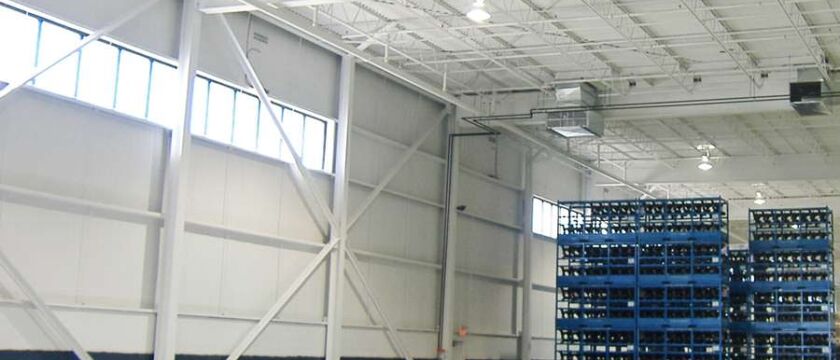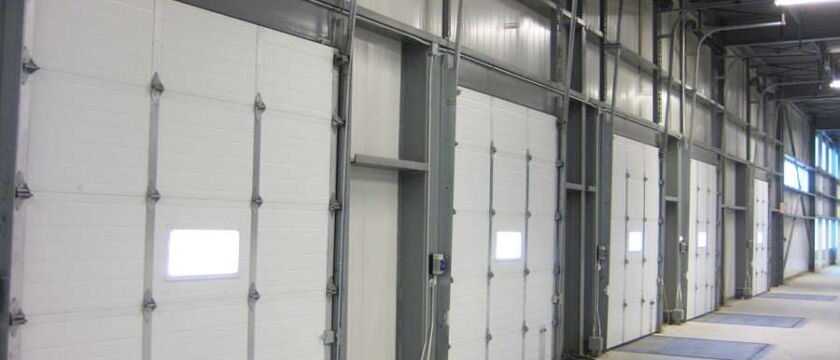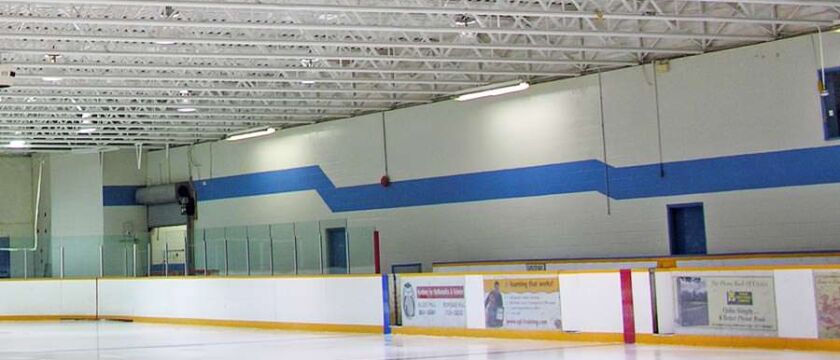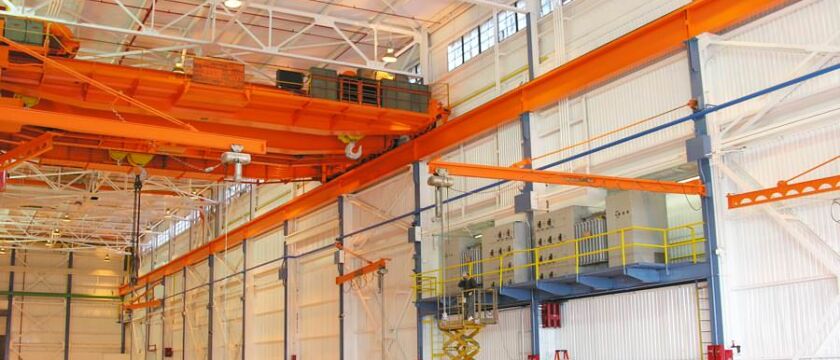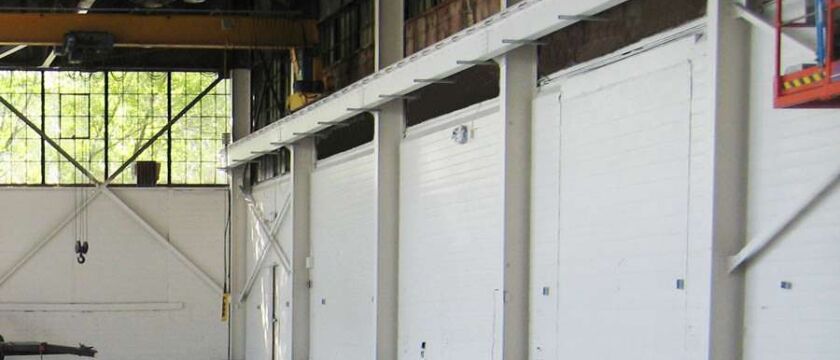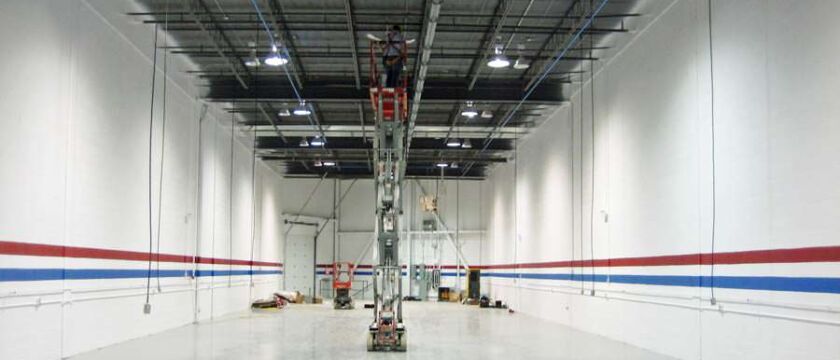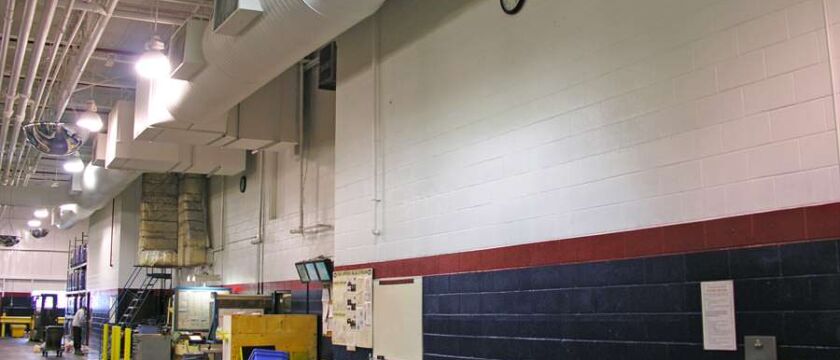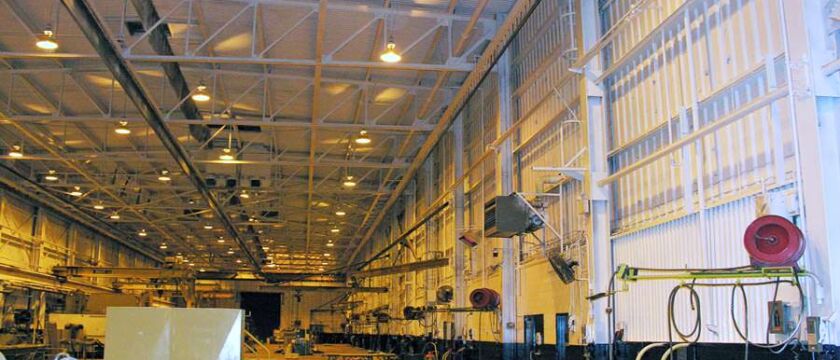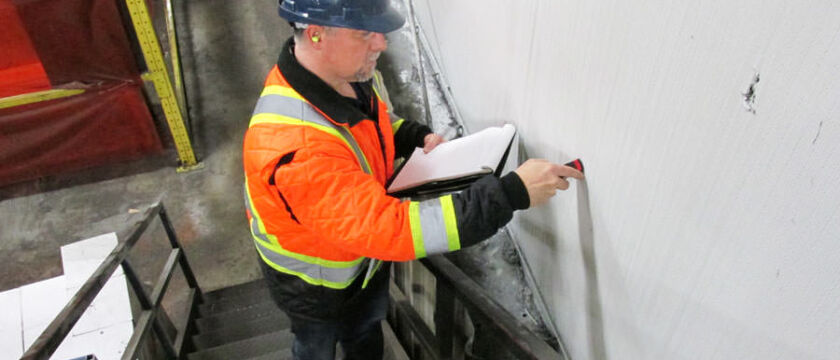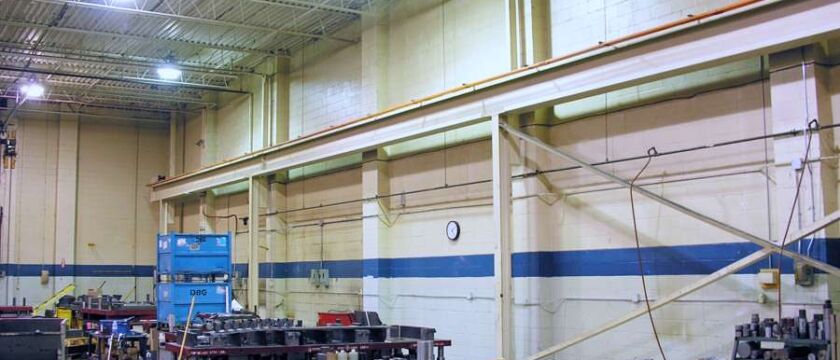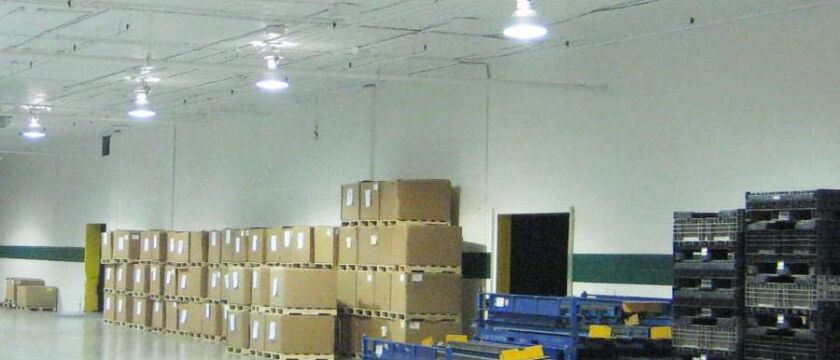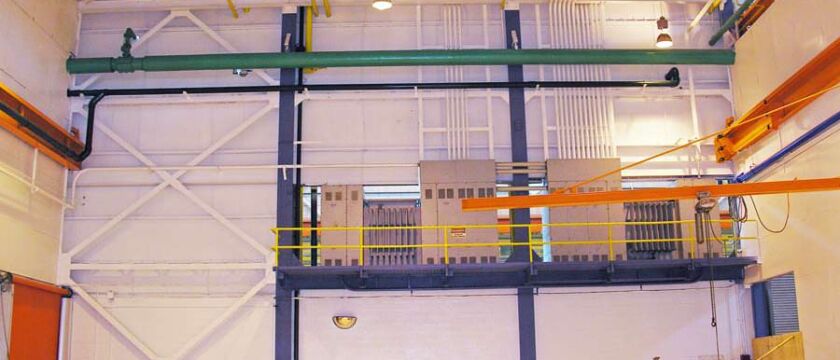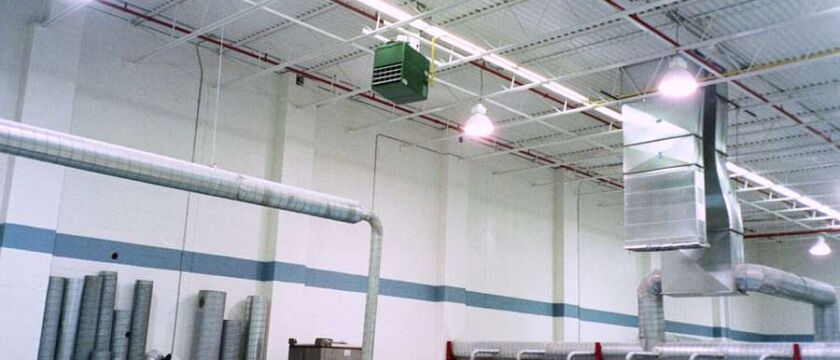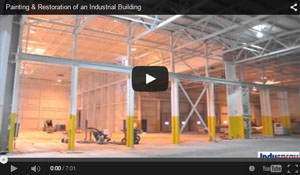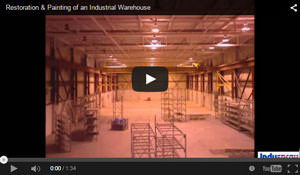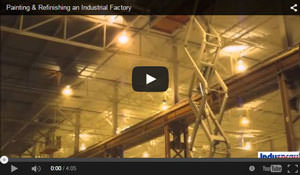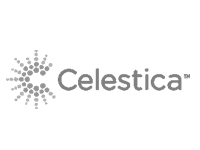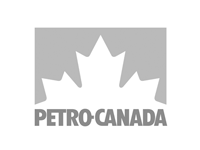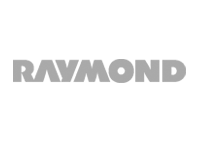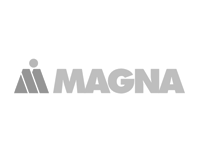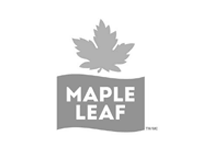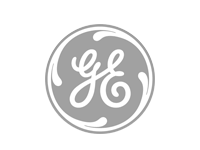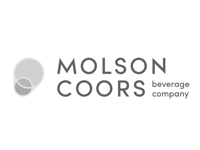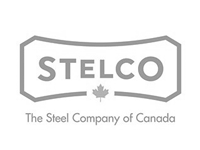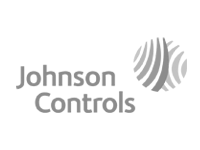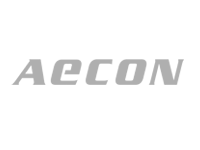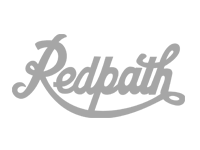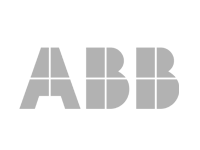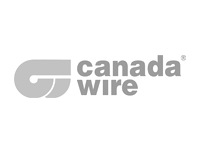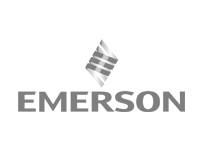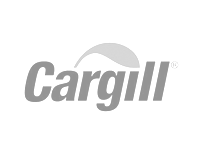Painting/Painters of Walls in Commercial Buildings, Warehouses & Facilities
Next to painting the ceiling in a commercial building or warehouse, painting the interior and exterior walls is the best way to improve the overall appearance of your facility.
If you have plans to paint the ceiling in your facility, it’s a highly cost-effective time to paint the walls as well, because a lot of the cover-up preparation would already be done and the access equipment would already be onsite. Often, once the ceiling is painted, it accentuates any imperfections in the walls. Items such as walls being dirty, yellowed, scraped, or the wrong colour can negatively impact the appearance of a facility.
Paint Types & Materials
The coating system used depends greatly up on the substrate being painted and the use or conditions in the immediate area of the walls. The most commonly used coatings in commercial buildings and warehouses are semi-gloss or gloss white paints, either in an alkyd or latex resin.
Epoxy paints can be used for a more durable and chemically resistant system, but the cost is higher. Keep in mind also that epoxy paints will yellow with age. If frequent pressure washing of your walls to keep them clean is planned, an epoxy paint finish is a good idea since it will be the most likely of all the coating options to withstand the stress of pressure washing or chemical cleaning.
On bare unpainted wall surfaces, using the appropriate primer is important. On commercial cinder/concrete block walls, especially in a food manufacturing environment, it’s critical to prime fill all the pores in the block to ensure the finish paint is free of pin holes and other small cavities that would allow bacteria to propagate. This is done by using a block filler primer. This primer has a high viscosity and allows the applicator to cover over the porous surface of the block. Hygiene is critical in food and pharmaceutical facilities, so correct surface prep and priming is critical. Mildew and mold-resistant coatings are also available and can be used for added protection. Where mold or mildew are a concern, equally as important is to ensure the ventilation system removes excess moisture from the rooms to prevent a breeding ground for the mold.
Low-odor alkyd coatings use higher quality solvents and prevent odors from contaminating food products nearby. Latex or water-based coatings designed for tougher environments can also be used. Low-odor coatings are particularly important when painting a dairy, since dairy products are very susceptible to odor contamination.
Adhesion characteristics vary between the various coatings and make it important to choose the right one. The most tenacious coatings for walls are epoxy paints, and the least are generally latex coatings. Polyamide epoxy paints chemically react when curing, and are less dependent upon air drying. This chemical cure allows certain epoxy paints to be developed to cure at very low temperatures when applied. This is required when working in a cool room or when the ambient temperature is low. This chemical reaction produces a coating with high surface strength and excellent chemical resistance. This is why epoxy paints are able to withstand harsher conditions. Standard alkyd and latex coatings generally need 10 degrees Celsius or 50 degrees Fahrenheit to dry and cure properly.
Colour Considerations
In addition to the type of paint used, the colour can have an impact upon the cost of your commercial wall painting project. When paint is tinted in a paint store, base colours are used and a balance between titanium dioxide (for hiding) and the pigment that provides you with the colour itself have to be balanced. When more pigment is put into paint to give darker or more vibrant colours, less titanium dioxide is added which creates a paint that has lower hiding characteristics when applied. Therefore, more coats of paint might be required to successfully paint walls with existing darker colours. In addition, darker or more brilliant paints are more expensive per gallon, so that increases the cost.
On the other hand, when factory-tinted prepackaged colours are produced, the use of powdered pigments allows the paint to include more titanium dioxide and therefore offer much better hiding characteristics. So if you plan to use dark accent colours on your walls, you might be better off choosing a factory-tinted colour as opposed to paint tinted from a base in a store, since the hiding will be better. Most manufacturing facilities use white for the majority of the walls, and use darker accent colours for stripes on walls and doors. Sometimes, the bottom 6 ft of a wall is painted darker to hide the area that gets dirty the quickest, so the facility looks cleaner for longer.
Over time, be prepared for some yellowing of your walls if you paint them white. This is a common occurrence, and difficult or impossible to prevent. Generally, paint will discolour uniformly which at least makes the yellowing less noticeable. Commercial manufacturing facilities that use oil mists for lubricating stamping press forms in their production process tend to yellow their painted surfaces faster due to the oil eventually collecting on the walls and ceilings.
Surface Preparation
Surface preparation on commercial building walls prior to painting can include scraping, cold water washing, hot water washing, dry ice blasting, sandblasting, and solvent washing. You have to be careful with the use of water in a preparation procedure if there is electricity in proximity to the areas being washed. Check to make sure electrical conduits and control boxes are able to withstand water exposure when planning your project (most are not), or accept that there will be temporary electrical shorts in lights, etc.
Photo Gallery
Click to view some of our commercial painting projects for walls.
Video Gallery
Click to view some of our commercial painting projects showing the typical steps involved in repainting and restoring commercial facilities, including walls.
Locations We Service
We are Toronto industrial painters serving Toronto, the GTA, Southern Ontario, Western Ontario, Eastern Ontario and parts of Northern Ontario.
Our territory includes:
Our Customers
We’ve been in business since 1975, serving over 4,875 satisfied clients while completing thousands of industrial and commercial painting projects. These are just some of our customers:
Your Project
Have questions about painting the interior or exterior walls of your commercial building or warehouse? We can quickly assess your needs and make cost-effective recommendations. Contact us today — we’re here to help.
Start your project with expert advice and a great price.

